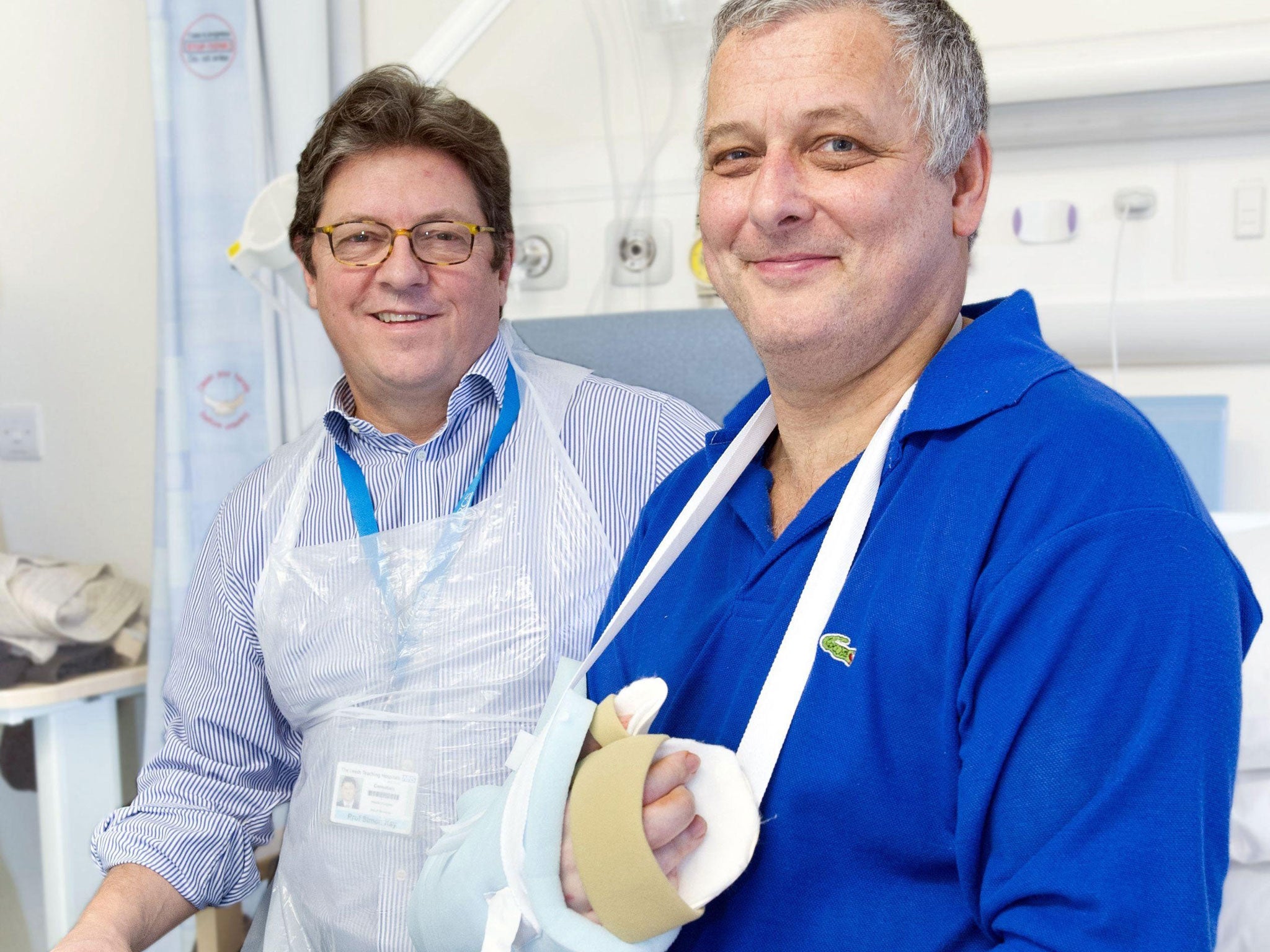'I'm getting slight movement now': Transplant first for Britain as Mark Cahill is given new hand

Your support helps us to tell the story
From reproductive rights to climate change to Big Tech, The Independent is on the ground when the story is developing. Whether it's investigating the financials of Elon Musk's pro-Trump PAC or producing our latest documentary, 'The A Word', which shines a light on the American women fighting for reproductive rights, we know how important it is to parse out the facts from the messaging.
At such a critical moment in US history, we need reporters on the ground. Your donation allows us to keep sending journalists to speak to both sides of the story.
The Independent is trusted by Americans across the entire political spectrum. And unlike many other quality news outlets, we choose not to lock Americans out of our reporting and analysis with paywalls. We believe quality journalism should be available to everyone, paid for by those who can afford it.
Your support makes all the difference.A 51-year-old man has become the first person in the UK to receive a new hand in a pioneering eight-hour transplant operation.
Mark Cahill, of Halifax, underwent the long, complex procedure at Leeds General Infirmary last week after a donor hand that matched his blood type became available.
A shocked Mr Cahill was told on Boxing Day that a donor hand was available and he underwent the procedure a day later in the pioneering operation.
The former pub landlord from Greetland, near Halifax, West Yorkshire, said the move had changed his life.
He told ITV's Daybreak: "Eight o'clock on Boxing Day night we got a phone call saying we may have a donor.
"As you can imagine, the day after Christmas it was quite a shock.
"I'm getting slight movement now, my feeling has just started coming back, but everything's looking very, very good.
"Long term I won't have 100% use of it, but obviously I'm going to have a lot more use than I had with the existing hand.
"I think I've dealt with it pretty well. The only thing you can't do is know what is going to happen after the operation, and as it has turned out it is brilliant. I'm well happy.
"Hopefully I will be able to get back to work for a start, that's a major difference.
"For a start I might be able to cut my food up, button my shirts, fasten a pair of shoelaces, and mainly I'll be able to hold my grandson's hand."
And Mr Cahill told the BBC: "When I look at it and move it, it just feels like my hand.
"Right now it feels really good, it's not a lot of pain, it looks good, it looks a great match and I'm looking forward to getting it working now."
The surgical team, which was led by Professor Simon Kay, an internationally renowned microsurgeon who has reattached dozens of partially severed hands, is thought to have made history by becoming the first to remove a recipient's non-functioning right-hand and transplanting the donor hand in the same surgery. About 60 hand transplants have been carried out successfully around the world but this procedure allowed for a more accurate restoration of nerve structures and a greater chance of success.
This is a potentially critical improvement, as the first man in the world to have a hand transplant later needed it removed. But the new feat is not without ethical concerns. The patient must take immunosuppressant drugs for life, increasing the risk of cancer and infection in the host.
The Yorkshire-based team of surgeons had been planning the procedure since December 2011.
The potential patients went through a series of health checks and psychological assessments to ensure they have carefully considered the implications of the procedure, which whittled down the candidates from six to only two, a spokesman for the hospital said. Mr Cahill, who was one of the two potential recipients chosen last year, suffered from gout from an early age, leaving one hand completely non-functioning and another with only partial movement.
"The team was on standby from the end of November awaiting a suitable donor limb and the call came just after Christmas," Professor Kay said. "It is still early days but indications are good and the patient is making good progress.
"This operation is the culmination of a great deal of planning and preparation over the last two years."
Join our commenting forum
Join thought-provoking conversations, follow other Independent readers and see their replies
Comments